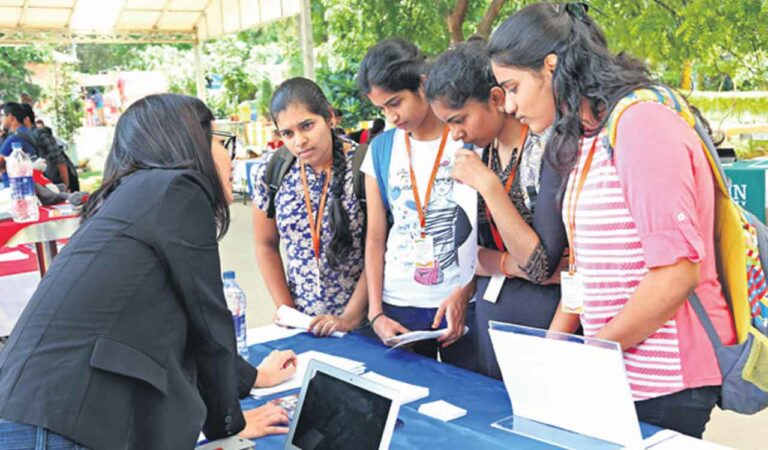Student Process Steps: Navigating through the U.S. Immigration System – Part I
Different rules apply depending on your student type and education level. Learn what student type and education level applies to you below:

The next three weeks we will discuss the entire process of preparing, arriving, and thriving as an international student in the United States. This week’s article focuses on preparing for your journey to study in the United States.
Non-immigrant students who come to the United States to study must follow specific rules. However, different rules apply depending on your student type and education level. Learn what student type and education level applies to you below:
Student Type:
F-1: Non immigrant students enrolling in academic programs at a university, college, high school, private elementary school, seminary, conservatory or another academic institution, including an English language program.
M-1: Non immigrant students enrolling in a technical program at vocational or other recognized non-academic institution, other than a language training program.
Education Level:
Kindergarten to Grade 12: In the United States, students usually begin a formal educational program around age five or six in kindergarten. Children then complete primary and secondary school which spans from first grade through grade 12.
Postsecondary: In the United States, students usually enrol in postsecondary schooling as adults (over the age of 18) and this category includes technical and community colleges, undergraduate, graduate and doctoral programs.
English language training: In the United States, non-native English-speaking students enrol in intensive training programs that have the sole purpose of increasing fluency in the language. Students of all ages can enroll in English language training programs.
As you prepare to study in the United States, keep the following steps in mind:
Step 1-3: Pre-arrival
Step 1: Choosing the Right School. The first crucial step is to select a Student and Exchange Visitor Program (SEVP)-certified school in the United States. The School Search tool (https://studyinthestates.dhs.gov/school-search) provided by Study in the States helps you find eligible institutions.
Whether you’repursuing an academic or technical program, ensure your chosen school is certified to enrol F-1 or M-1 students. For more information about the types of programs that are available to you, please visit EducationUSA (https://educationusa.state.gov/). If you are a student currently enrolled in the equivalent of a kindergarten through grade 12 program, visit the Kindergarten to Grade 12 webpage on Study in the States (https://studyinthestates.dhs.gov/schools/get-started/kindergarten-to-grade-12-schools).
Step 2: Paying the I-901 SEVIS Fee. Once you are accepted into an SEVP-certified school, your school’s designated school official will send you a document called the Form I-20, “Certificate of Eligibility for Nonimmigrant Student Status (https://studyinthestates.dhs.gov/students/prepare/student-forms).”
The Form I-20 is a paper record of your information in the Student and Exchange Visitor Information System (SEVIS) database. Each school that accepts you will mail you a Form I-20. Some schools may wait for you to request this form from them, however, while others will send it to you automatically. Make sure you know your school’s policy for sending you the Form 1-20.
For more information, visit the Students and the Form I-20 page (https://studyinthestates.dhs.gov/students/prepare/students-and-the-form-i-20).
Paying I-901 SEVIS Fee: After receiving your Form I-20, you must pay the I-901 SEVIS Fee (https://www.ice.gov/sevis/i901).
Federal regulations require all F, M and J students pay the I-901 SEVIS Fee before applying for their U.S. student visa. You can pay your I-901 SEVIS Fee online at FMJfee.com (https://www.fmjfee.com/i901fee/index.html#) or by using Western Union Quick Pay (https://www.ice.gov/sevis/i901/wu-instructions). You must present the receipt as proof of payment when you apply for visa. It is important that the SEVIS ID number on your I-901 SEVIS Fee receipt matches your SEVIS ID number on your Form I-20. If it does not, or you encounter other issues paying your fee, please contact SEVP.
I-901 SEVIS Fee Assistance:
Email address: fmjfee.sevis@ice.dhs.gov
I-901 SEVIS Fee customer service hotline at 703-603-3400
Learn more about the I-901 SEVIS Fee:
I-901 SEVIS Fee pages on ICE.gov and Study in the States (https://studyinthestates.dhs.gov/students/prepare/paying-the-i-901-sevis-fee)
I-901 SEVIS Fee Payment Tutorial (https://studyinthestates.dhs.gov/2013/10/i-901-sevis-fee-payment-tutorial)
I-901 SEVIS Fee FAQs on ICE.gov (https://www.ice.gov/sevis/i901/faq)
Step 3: Obtaining Your Student Visa. With your I-901 SEVIS Fee payment receipt, you’re now ready to apply for your student visa at the nearest U.S. Embassy or Consulate. Be prepared for an in-person interview where you’ll demonstrate your eligibility for the visa category you are applying for. Keep in mind that possessing a visa doesn’t guarantee entry; final approval rests with U.S. Customs and Border Protection officers.
The links below has more information on the visa process:
U.S. Department of State Visas (for F or M visas) (https://travel.state.gov/content/travel/en/us-visas/study/student-visa.html)
Exchange Visitors (J visa) (https://travel.state.gov/content/travel/en/us-visas/study/exchange.html)
These preparatory steps lay the foundation for your journey to the United States. Stay tuned for our next article, where we’ll guide you through the arrival process and settling into student life in the United States.
– U.S. Consulate General Hyderabad
Please visit the U.S.-India Educational Foundation’s website to learn more about studying in the United States: https://www.usief.org.in/Hyderabad.aspx
• Phone/ Whatsapp: 91-8008462712/8008465712/ 8008462560
• Email: usiefhyderabad@usief.org.in | hyderabad@educationusa.org
Related News
-
Indian Army signs MoU to fast‑track various drone capabilities
4 mins ago -
Hyderabad startup gets CDSCO nod for pain management wearable
9 mins ago -
Hyderabad: Unidentified youth dies in KPHB flyover bike crash
11 mins ago -
Second phase of local body polls: BRS makes comeback in Asifabad
15 mins ago -
Hyderabad: 21-year-old woman dies by suicide in Amberpet
17 mins ago -
AI trend pokes fun at Rs 10 lakh per selfie with Messi
23 mins ago -
KTR condemns Congress attack on BRS candidate in Kamareddy, warns of serious consequences
46 mins ago -
Hyderabad scientist wins IEI Young Engineer award 2025
51 mins ago




